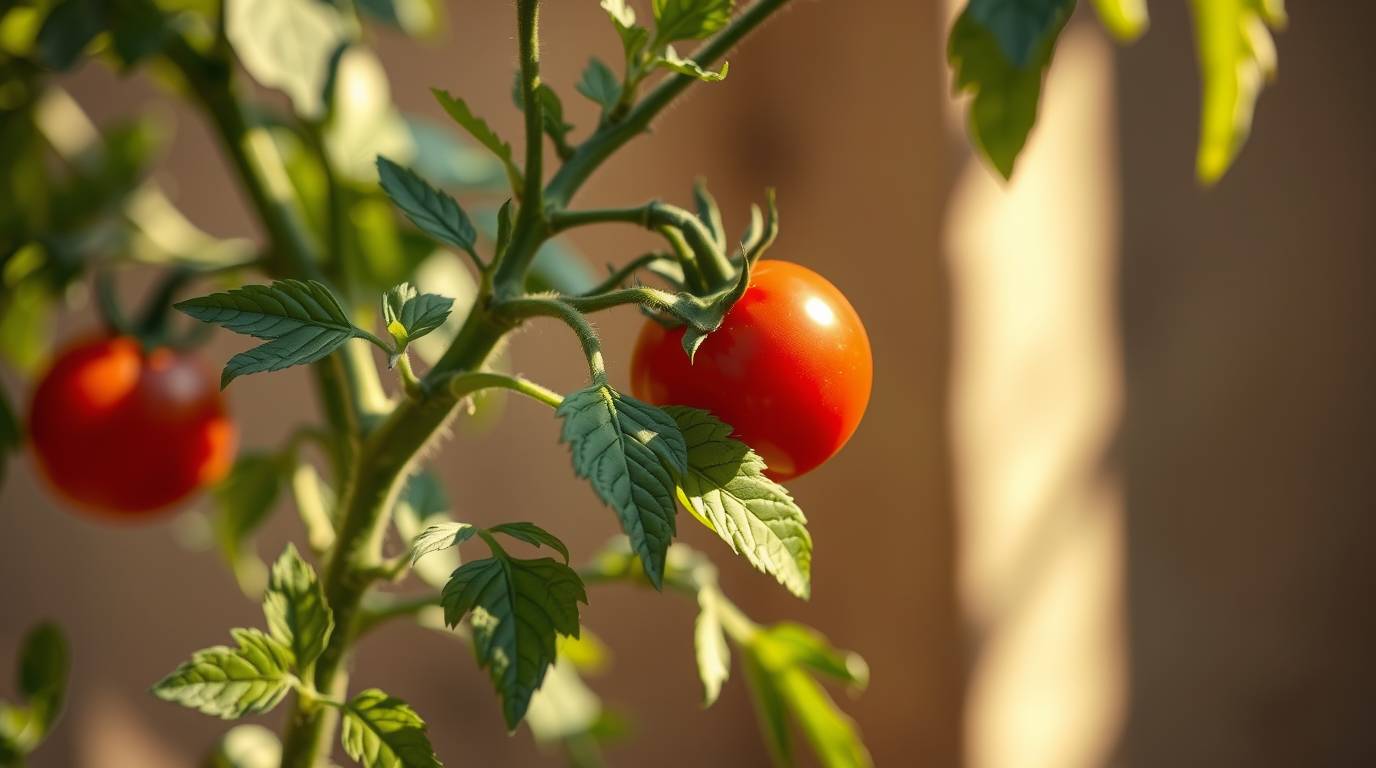We use affiliate links to run our site. When you buy through links on our site, we may earn an affiliate commission, without any added cost to you. Learn more
If you’ve ever watched your tomato plants shoot skyward like green rockets, you’re not alone. Many gardeners find themselves staring up at towering tomato vines that have outgrown their supports and seem determined to reach for the clouds.
While vigorous growth is generally a good sign, excessively tall tomato plants can become unwieldy, top-heavy, and difficult to manage. The good news is that with the right techniques and timing, you can keep your tomato plants at a manageable height while maximizing your harvest.
Understand Your Tomato Type:
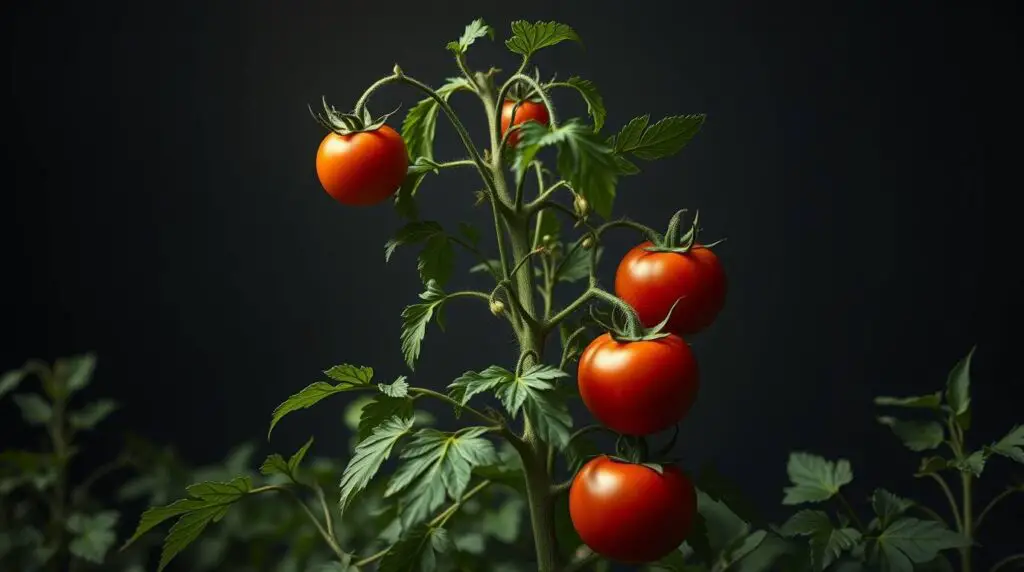
Before diving into management techniques, it’s crucial to understand what type of tomato plants you’re dealing with. Tomatoes fall into two main categories that behave very differently when it comes to height.
Determinate tomatoes are the well-behaved cousins of the tomato family. These compact, bushy plants grow to a predetermined height of about 4-5 feet and then stop growing. They set all their fruit at once and ripen within a 4-6 week window, making them ideal for canning and preserving.
Indeterminate tomatoes, on the other hand, are the marathon runners of the tomato world. These vining plants continue growing throughout the entire growing season until killed by frost. They can easily reach 6-8 feet or more in height and produce fruit continuously over an extended period.
Essential Support Systems: Building the Foundation
Install Support Systems Early
The most critical mistake gardeners make is waiting too long to provide support. Install your support system at planting time, not when your plants are already 3 feet tall and flopping over 7 Tips for How to Stake Tomatoes to Get a Better Harvest. Tomatoes can grow 2-3 feet in just a few weeks during peak season, making late staking much more challenging.
Staking Options:
- Single stakes: Use 5-foot stakes for determinate varieties and 8-foot stakes for indeterminate types
- Drive stakes 12 inches deep into the ground, about 4 inches from the plant base
- Use sturdy materials: Wood, metal, or thick bamboo that won’t bend under the weight of mature plants
Advanced Support Systems:
- Florida Weave: Install strong T-posts at row ends and weave twine between plants as they grow.
- Trellis systems: Create A-frame structures with horizontal supports for multiple plants
- Cage systems: Use large, sturdy cages (not the flimsy store-bought ones) for indeterminate varieties
Avoid those cone-shaped tomato cages from the garden center – they’re designed for determinate varieties and will topple over with tall indeterminate plants. Also, don’t use stakes that are too short or thin, as they’ll bend or break under the weight of a mature plant loaded with fruit.
Pruning Techniques:
Remove Suckers
Suckers are shoots that grow in the junction between the main stem and branches (leaf axils). For indeterminate tomatoes, regular sucker removal is essential for height management.
Proper Suckering Technique:
- Remove suckers when they’re 2-4 inches long – they’re easier to pinch off and the plant recovers faster.
- Use your fingers to pinch out small suckers rather than tools to reduce disease transmission.
- Keep the first sucker below the lowest flower cluster – this becomes your second main stem.
- Remove all other suckers to concentrate energy into fruit production.
Tip: Prune in the morning after dew has dried but before the heat of the day. This reduces stress on the plant and minimizes disease risk.
Practice Bottom Pruning
Remove lower leaves and branches that touch the ground or show signs of disease. Keep the leaf just below the lowest fruit cluster, and all leaves above that point. This improves airflow, reduces disease pressure, and helps the plant focus energy on upper growth and fruit production.
DON’T: Over-Prune Determinate Varieties
Determinate tomatoes only need minimal pruning – remove suckers below the first flower cluster and any diseased or damaged growth. Over-pruning determinate varieties can actually reduce your harvest since they have a limited growing period.
Topping:
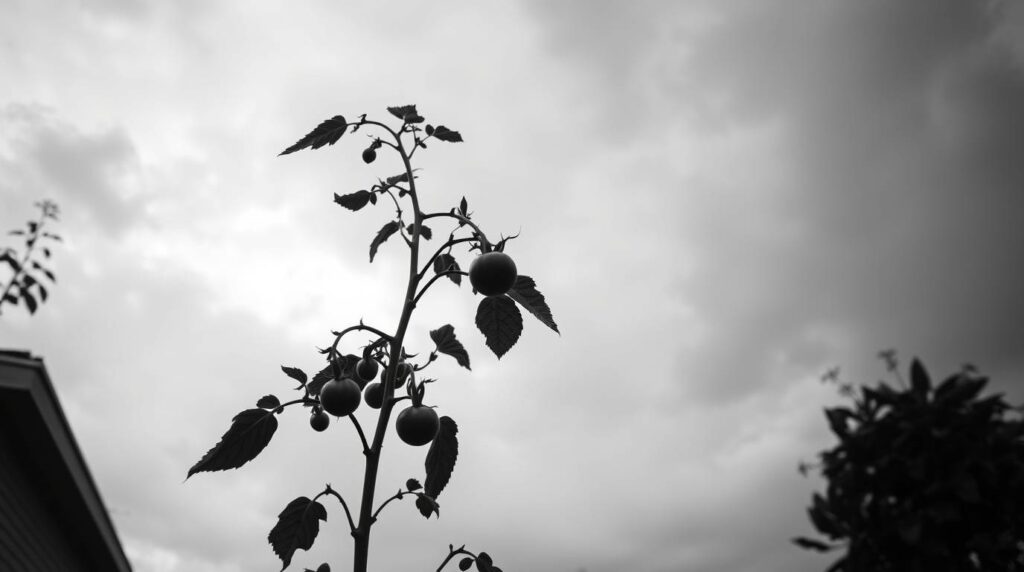
Top Your Plants at the Right Time
Topping – cutting off the growing tip of the main stem – is your most powerful tool for height control. The key is timing this correctly for maximum benefit.
When to Top:
- About 1 month before your expected first frost for determinate varieties.
- When plants reach 6 feet tall, and become unwieldy.
- When plants outgrow their support system, and start flopping over.
How to Top Properly:
- Cut 2 cm above a leaf node to encourage new growth from that point.
- Use clean, sharp pruning shears to make a clean cut.
- Allow suckers below the cut to develop into new productive branches.
DON’T: Top Too Early in the Season
Topping too early in the growing season can significantly reduce your total harvest. Wait until you have several fruit clusters set and the plant has reached a problematic height before topping.
Advanced Management Techniques
Use the “Lean and Lower” Method
For greenhouse or high tunnel growing, the “lean and lower” technique allows continued growth while managing height. As plants reach the overhead support, release more twine and gently lean the plant to one side, allowing it to continue growing horizontally rather than vertically.
Try the “Brushing” Technique
Research has shown that gently brushing or touching tomato plants can help control height through the release of ethylene, which inhibits stem elongation (source). Gently brush the tops of plants daily, but don’t use too much force.
Manage Multiple Leaders
For indeterminate varieties, you can train plants to have 2-3 main stems instead of one. This creates a bushier plant that’s easier to manage while still maintaining good production.
Common Mistakes to Avoid
DON’T: Wait Until Plants Are Falling Over
By the time your tomato plants are falling over, you’ve waited too long to implement height management strategies. Start early and stay consistent with your management practices.
DON’T: Remove Too Many Leaves at Once
Leaves are the plant’s food factories. Removing more than 25% of the foliage at one time can stress the plant and reduce fruit production. Make pruning a regular, gradual process rather than a dramatic one-time event.
DON’T: Ignore Plant Spacing
Overcrowded plants compete for light and air circulation, leading to weak, spindly growth that’s more likely to become too tall. Space plants 18-24 inches apart for determinate varieties and 24-36 inches apart for indeterminate types.
DON’T: Forget About Nutrition
Over-fertilizing with nitrogen can cause excessive vegetative growth, leading to tall, leafy plants with poor fruit production. Use a balanced fertilizer or one specifically formulated for tomatoes that’s higher in phosphorus and potassium.
Seasonal Management Calendar
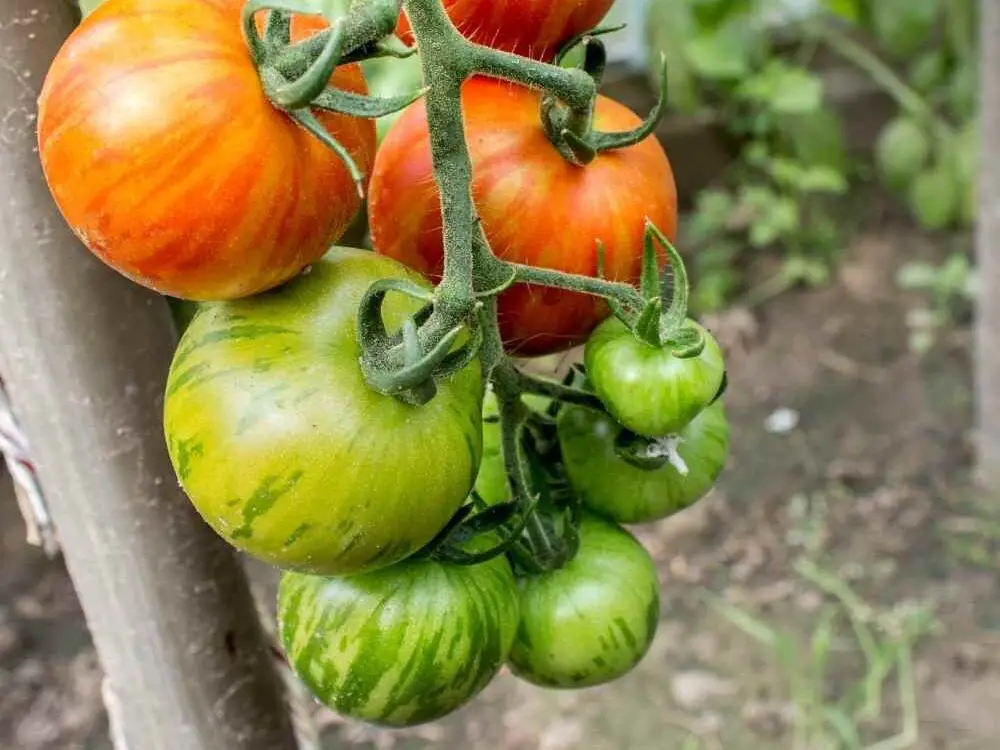
Early Season (Planting to 2 feet tall):
- Install support systems
- Begin light suckering
- Remove bottom branches touching soil
Mid-Season (2-4 feet tall):
- Continue regular suckering every 7-10 days
- Tie plants to supports as needed
- Monitor for disease and remove affected foliage
Late Season (4+ feet tall):
- Consider topping if plants are getting unwieldy
- Focus on ripening existing fruit
- Reduce watering to concentrate flavors
Troubleshooting Common Height Problems
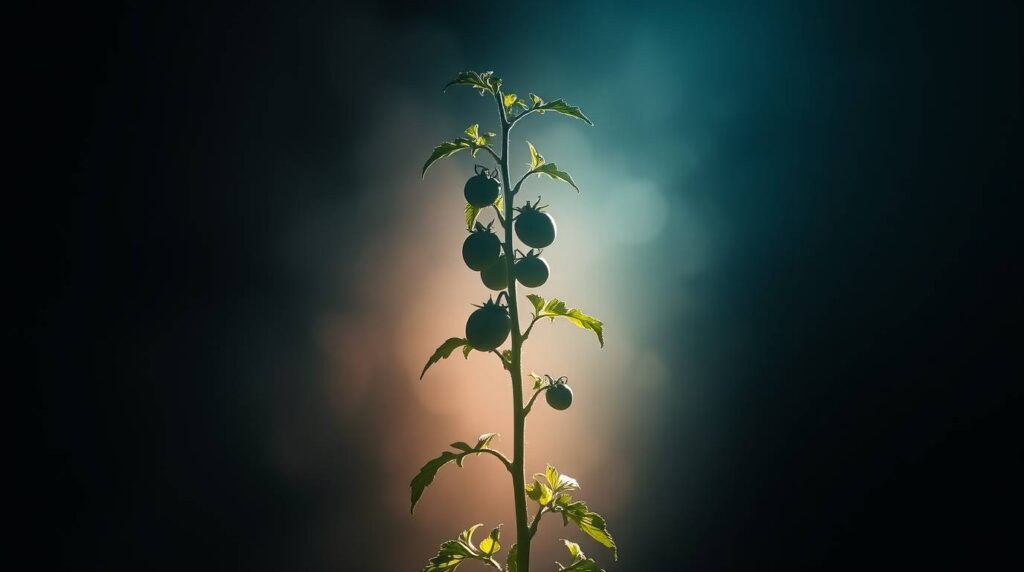
Problem: Plants growing too fast and becoming spindly
Solution: Increase light exposure, reduce nitrogen fertilizer, and implement regular pruning
Problem: Plants falling over despite staking
Solution: Add additional support stakes, use the Florida Weave method, or create a cage system around existing stakes
Problem: Reduced fruit production after pruning
Solution: Ensure you’re not over-pruning and that plants are receiving adequate nutrition and water
Final Thoughts:
You don’t need to wrestle with nature to manage tall tomato plants. Simply understanding your tomato varieties, implementing proper support systems early, and using strategic pruning techniques can keep your plants at a manageable height while maximizing your harvest.
Consistency is key – regular maintenance throughout the growing season is far more effective than dramatic interventions when problems become severe. The goal isn’t to stunt your plants’ growth but to channel their energy into producing the best possible fruit.
With these techniques in your gardening toolkit, you’ll be able to enjoy abundant harvests from well-managed, productive tomato plants that stay exactly where you want them. Whether you’re dealing with a few container plants or an entire tomato patch, these strategies will help you maintain control while letting your tomatoes reach their full potential.
Amazon and the Amazon logo are trademarks of Amazon.com, Inc, or its affiliates.

Hi there! My name is Prasenjit and I’m an avid gardener and someone who has grown a passion for growing plants. From my hands-on experience, I have learned what works and what doesn’t. Here I share everything I have learned.
